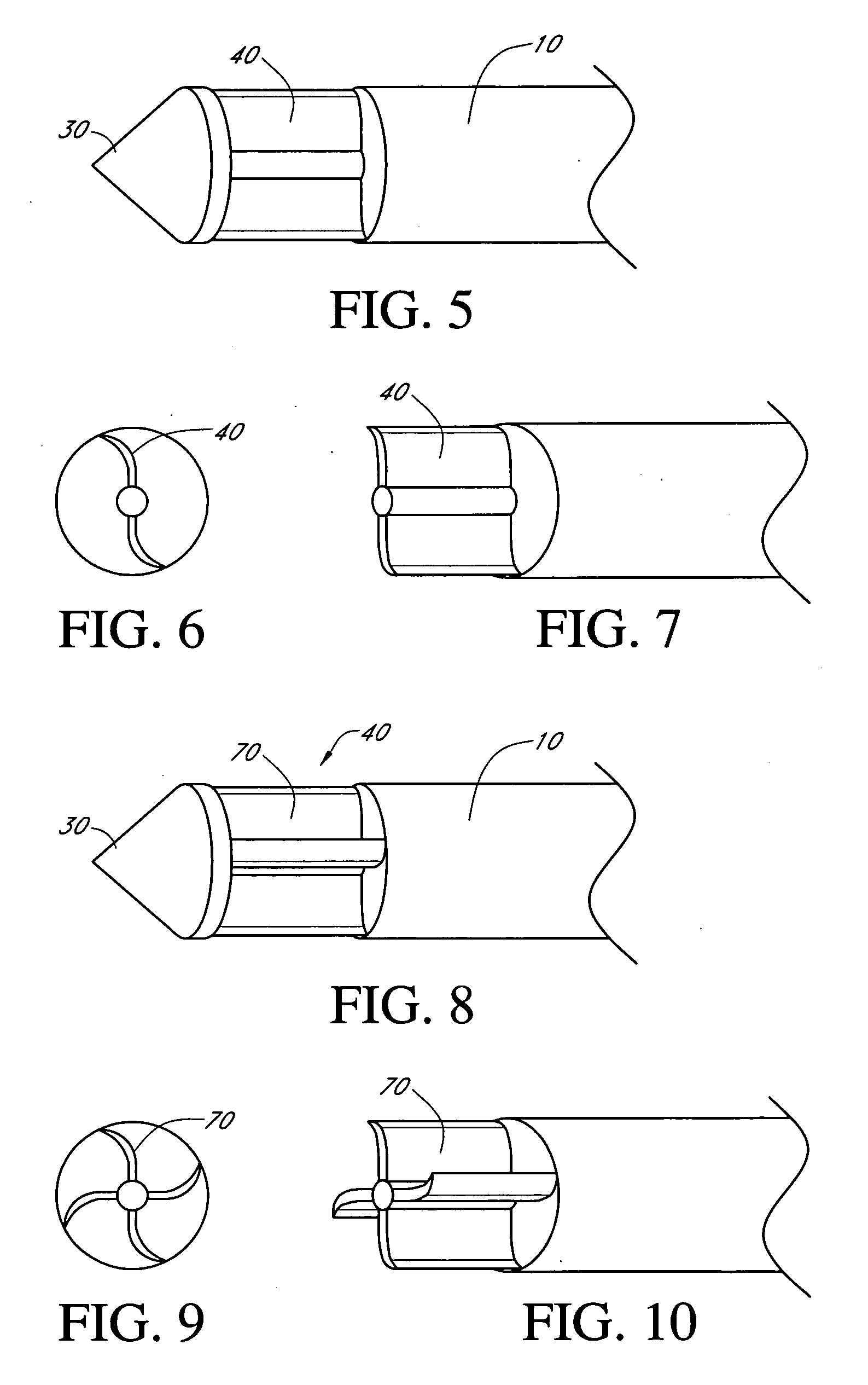Rotating biopsy device and biopsy robot
a biopsy robot and rotating technology, applied in the field of rotating biopsy devices and biopsy robots, can solve the problems of bulky devices, pain, discomfort and inaccurate sampling, pain to patients, etc., and achieve the effect of convenient use by medical practitioners
- Summary
- Abstract
- Description
- Claims
- Application Information
AI Technical Summary
Benefits of technology
Problems solved by technology
Method used
Image
Examples
Embodiment Construction
[0104]As should be understood in view of the following detailed description, this application is primarily directed to apparatuses, systems and methods for obtaining tissue samples. In one embodiment of the present invention, a rotatable biopsy needle with one or more biopsy blades can be used to effectively cut and obtain tissue samples. In one embodiment a rotating biopsy device with rotating blades cuts a tissue sample and utilizes centrifugal force to hold the tissue in place on the needle for extraction. In one embodiment, the rotating biopsy device uses electric powered automatic continuous rotation for easy recovery of the severed tissue samples. In some embodiments, continuous rotation generates centrifugal force that is very useful to keep the tissue sample in the blades until it is recovered. In one embodiment a total robotic biopsy with a rotating biopsy needle can be used with an automatic and / or remote control system to control localization, rotation of the blades and r...
PUM
 Login to View More
Login to View More Abstract
Description
Claims
Application Information
 Login to View More
Login to View More - R&D
- Intellectual Property
- Life Sciences
- Materials
- Tech Scout
- Unparalleled Data Quality
- Higher Quality Content
- 60% Fewer Hallucinations
Browse by: Latest US Patents, China's latest patents, Technical Efficacy Thesaurus, Application Domain, Technology Topic, Popular Technical Reports.
© 2025 PatSnap. All rights reserved.Legal|Privacy policy|Modern Slavery Act Transparency Statement|Sitemap|About US| Contact US: help@patsnap.com



